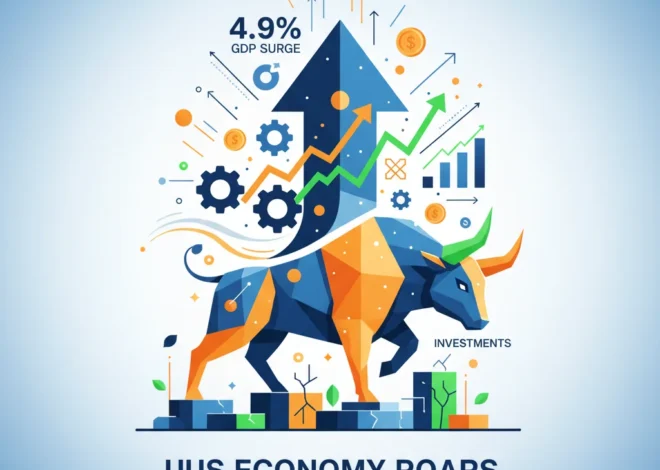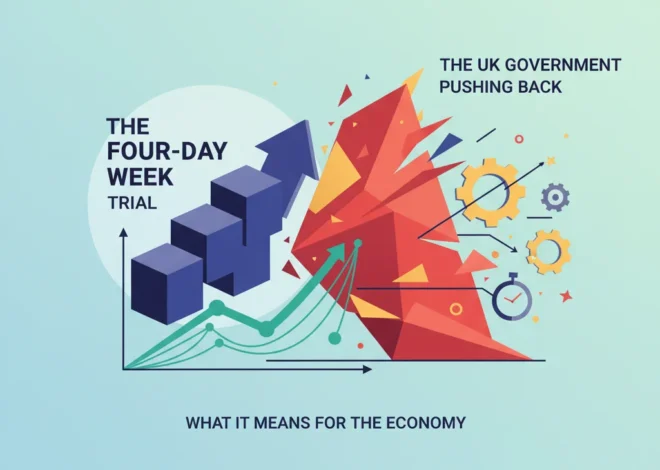
The Retail Rumble: Is Shein’s Digital Dominance a Death Knell for Primark’s High Street Reign?
In the ever-turbulent world of retail, a seismic shift is underway. For years, Primark, the Dublin-founded fast-fashion behemoth, has been an unshakeable pillar of the British and Irish high street. Its formula of rock-bottom prices and a vast physical footprint seemed invincible. But the ground is trembling. Recent figures reveal a concerning trend for its parent company, Associated British Foods (ABF): same-store sales in the UK and Ireland are down. As reported by the BBC, a portion of Primark’s once-loyal customer base is migrating, and a primary beneficiary of this exodus is the enigmatic, hyper-aggressive digital titan, Shein.
This isn’t just a story about two clothing retailers; it’s a compelling case study in modern business strategy, consumer economics, and the relentless march of digital disruption. For anyone involved in finance, investing, or business leadership, the battle between Primark’s established brick-and-mortar empire and Shein’s data-driven e-commerce machine offers critical insights into the future of the global economy and the shifting sands of the stock market.
The Primark Paradox: A High Street Giant Facing a Digital Deficit
For investors, “like-for-like” or same-store sales are a crucial health metric. They strip out the growth from new store openings, providing a clear picture of performance at existing locations. A decline here, as Primark is experiencing, signals a potential erosion of its core customer base or a decrease in spending per visit. While Primark’s overall sales might still be growing due to expansion, this underlying weakness is a red flag for analysts who closely watch ABF’s performance on the London Stock Exchange.
Primark’s long-standing strategy has been a masterclass in operational efficiency. By eschewing expensive online operations—logistics, returns, digital marketing—and focusing on high-volume sales in massive physical stores, it maintained razor-thin margins and unbelievably low prices. This model thrived for decades, making Primark a rite of passage for shoppers and a reliable cash cow for its parent company. However, the digital revolution, accelerated by the pandemic, has exposed a potential Achilles’ heel in this strategy. The very thing that made Primark strong—its physical-only presence—is now a point of vulnerability in an era where the consumer journey almost always begins online.
Gigaclear's Billion-Pound Crossroads: Inside the High-Stakes Sale of a UK Fibre Giant
Enter Shein: The Ultra-Fast Fashion Juggernaut
While Primark was perfecting the art of the high street, Shein was building a global empire in the cloud. The China-founded company represents not just fast fashion, but “ultra-fast fashion”—a business model built on speed, data, and a direct-to-consumer digital interface. Shein’s success is a testament to the power of modern financial technology and data analytics.
Here’s how its model fundamentally differs and poses a threat:
- Data-Driven Design: Shein doesn’t guess what’s trending; it knows. By scraping social media and analyzing real-time search and sales data, it can identify micro-trends and rush designs into production in a matter of days, not weeks or months.
- On-Demand Manufacturing: The company places extremely small initial orders (as few as 100 items) with its vast network of suppliers. If an item sells well, more are ordered instantly. If it doesn’t, it’s discontinued, minimizing waste and inventory risk—a major challenge for traditional retailers like Primark.
- Fintech-Powered E-commerce: Shein’s mobile app is a marvel of frictionless commerce. It leverages sophisticated fintech for seamless global payments, integrates “Buy Now, Pay Later” (BNPL) services to lower the barrier to purchase, and uses gamification to drive engagement and repeat buys. This digital-first approach, supported by a complex global banking network, allows it to operate in over 150 countries with relative ease.
This operational agility has given Shein a valuation that has, at times, eclipsed that of H&M and Zara’s parent company Inditex combined, making its rumored IPO one of the most anticipated and scrutinized events in the world of investing. According to a Reuters report, the company has confidentially filed for a US IPO, a move that would pour billions into its war chest and put immense pressure on its competitors.
A Tale of Two Titans: Primark vs. Shein
To fully grasp the competitive landscape, it’s helpful to compare these two retail giants side-by-side. The following table breaks down their core operational and strategic differences.
| Metric | Primark | Shein |
|---|---|---|
| Business Model | Brick-and-Mortar, High Volume | Digital-Native, Direct-to-Consumer (DTC) |
| Online Presence | Limited (Click-and-Collect trial) | 100% E-commerce (Mobile-first) |
| Supply Chain | Traditional (long lead times) | Agile, On-Demand (ultra-short lead times) |
| Marketing Strategy | Word-of-Mouth, In-Store Experience | Aggressive Social Media, Influencer Marketing |
| Key Market | UK, Ireland, Western Europe | Global (USA, Europe, Middle East, etc.) |
| Parent Company | Associated British Foods (Publicly Traded) | Privately Held (IPO pending) |
| Ethical Concerns | Supply chain transparency, labor practices | Forced labor allegations, environmental impact, data privacy |
The Macroeconomic Hurricane: Cost of Living and Consumer Choice
This retail drama is not happening in a vacuum. The global economy is grappling with persistent inflation and a cost-of-living crisis that is squeezing household budgets. This macroeconomic pressure is a double-edged sword. On one hand, it should benefit discount retailers like Primark. On the other, it forces consumers to be even more ruthless in their hunt for the absolute lowest price, a battle Shein often wins.
The core principles of economics dictate that when disposable income falls, consumers cut back on non-essential spending or trade down to cheaper alternatives. Shein’s hyper-competitive pricing, often undercutting even Primark, combined with the convenience of home delivery, presents an almost irresistible value proposition for cash-strapped consumers, particularly younger demographics who are digital natives. This shift in spending patterns is a powerful undercurrent that is reshaping the retail landscape far beyond just fashion.
The Hastings Paradox: Uncovering Investment Opportunities in Economically Deprived Regions
The Investor’s Perspective: Navigating Risk and Opportunity
From an investing standpoint, the Primark-Shein rivalry presents a fascinating dichotomy of risk and reward.
The Case for Associated British Foods (Primark): Investing in ABF is a bet on a diversified, stable, and transparent public company. Its food divisions provide a hedge against the volatility of the retail sector. The stock is easily accessible through standard trading platforms. The risk is that its star performer, Primark, faces a period of secular decline if it fails to counter the digital threat, potentially dragging down the entire company’s valuation.
The Case for Shein (Post-IPO): A potential Shein IPO offers explosive growth potential. An investment would be a pure-play bet on the future of e-commerce and a company that has demonstrated an ability to scale globally at an unprecedented rate. However, the risks are monumental. Shein is notoriously opaque, facing intense scrutiny over its labor practices, environmental impact, and corporate governance. As a Council on Foreign Relations analysis points out, these ESG (Environmental, Social, and Governance) concerns could lead to regulatory crackdowns, consumer boycotts, and significant headline risk for investors.
Furthermore, the conversation around supply chain ethics is evolving. There is growing speculation that technologies like blockchain could be deployed to create transparent and immutable records of a product’s journey from raw material to consumer. For a company like Shein, adopting such a technology could be a powerful way to counter criticism, though it would require a fundamental overhaul of its current, opaque supplier network. For now, this remains a significant, unaddressed risk factor for any prospective investor.
Conclusion: The Future is a Hybrid of Clicks and Bricks
The dip in Primark’s same-store sales is more than a line item on a financial report; it’s a harbinger of a new retail era. The narrative that shoppers are leaving Primark for Shein highlights a fundamental truth: in the modern economy, a business cannot afford to be a one-trick pony. Physical presence alone is no longer enough, and digital dominance comes with its own set of ethical and logistical challenges.
Primark’s challenge is to integrate a meaningful digital strategy without destroying the cost structure that made it famous. Shein’s challenge is to mature into a sustainable and responsible corporate citizen without losing the agility that made it a giant. For investors, business leaders, and consumers, the outcome of this battle will offer profound lessons on the delicate balance between price, convenience, technology, and ethics in the 21st-century marketplace.


